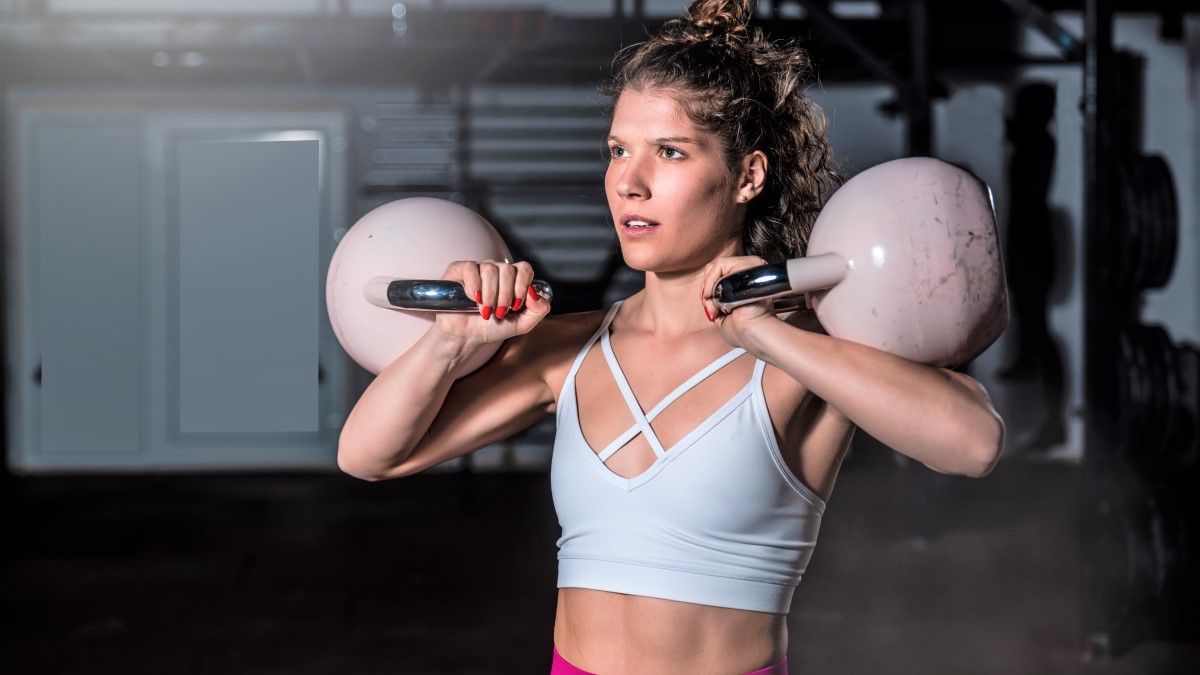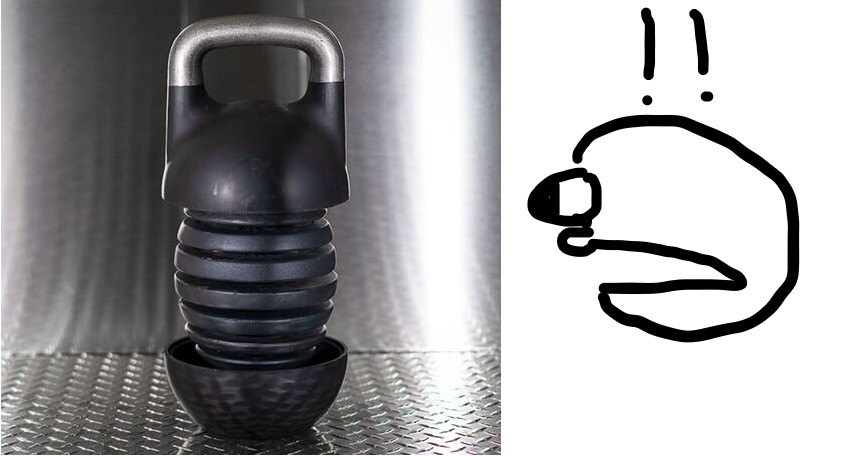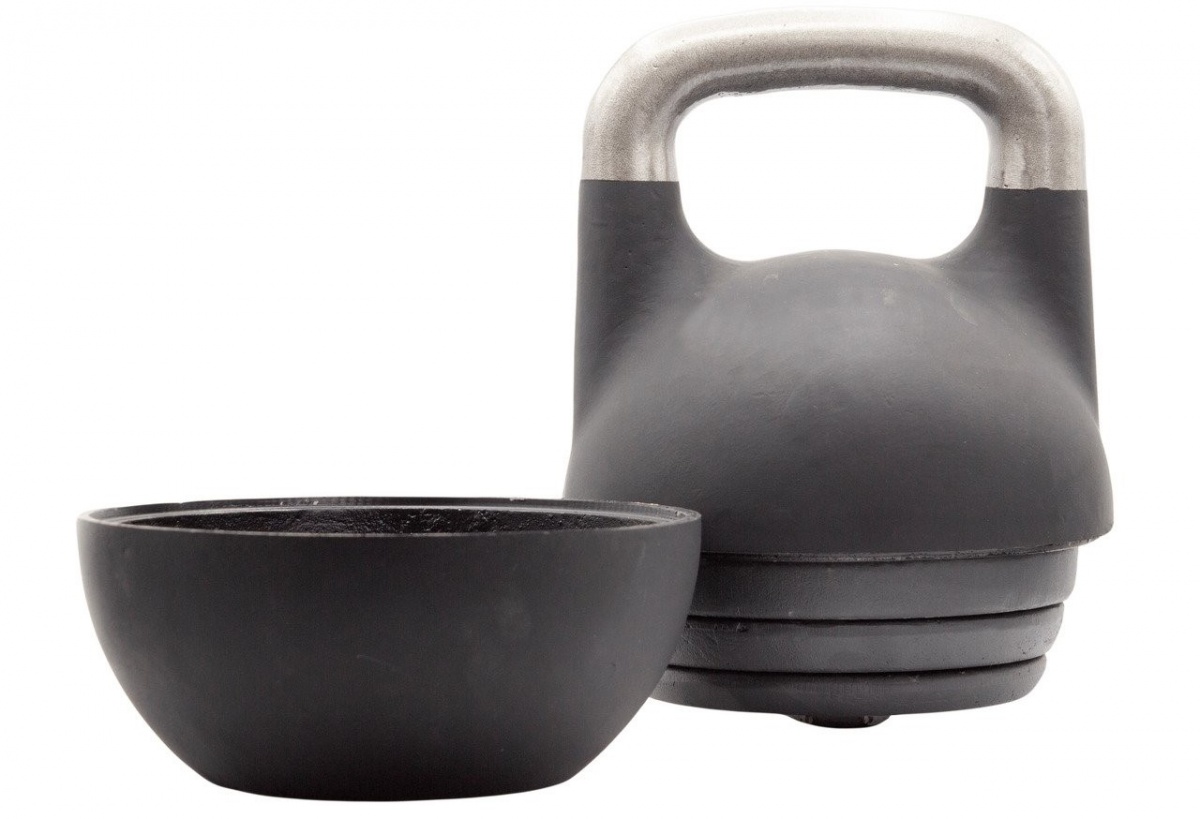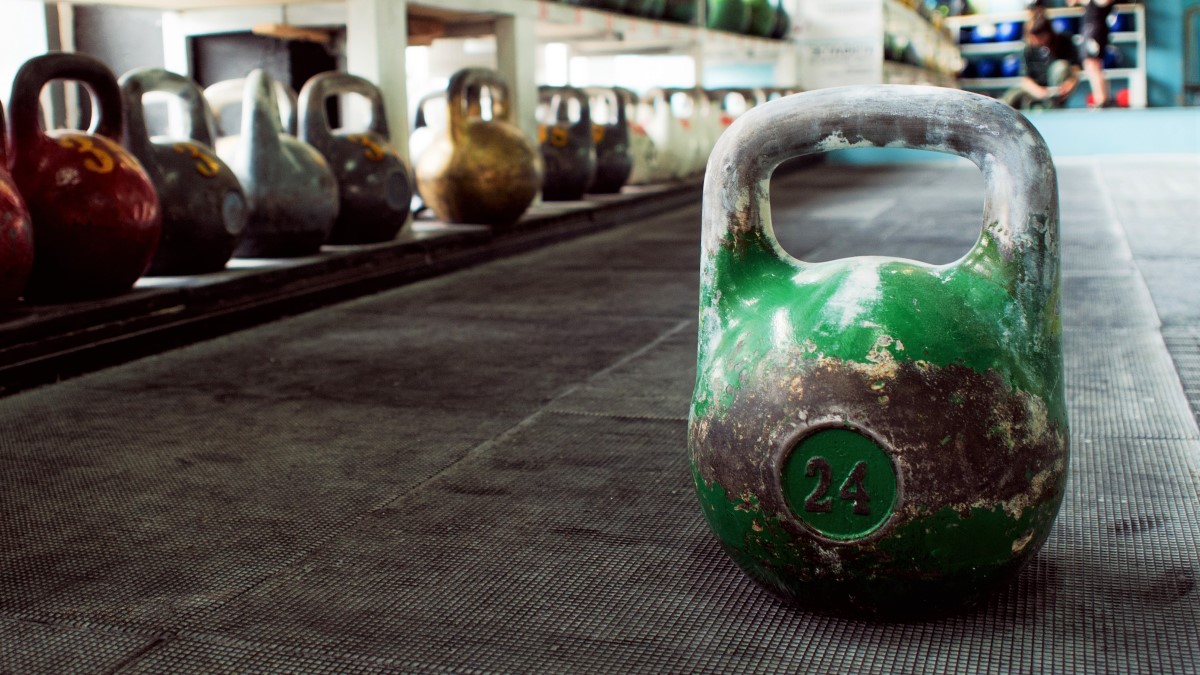A set of kettlebells is way different than dumbbells in that you can more easily get away with just two or three kettlebells, while with dumbbells you need pairs of each size in a large range, 5lb increments, to effectively train with. This is due to the types of exercises done with each. Kettlebells are used more often in full-body, coordinated movements for higher reps in a combined strength and conditioning workout, while dumbbells are used more for slow, controlled movements that rely more on raw strength.
Table of Contents
Starting Weights
Kettlebells were originally denominated in pood, a Russian unit of measure used to weigh crops, and it’s easy to imagine how people started lifting a 1-pood (~35lb) bell for strength training that they already had lying around. Today we can get any weight we want.
Here are possible starting weights for doing two-handed kettlebell swings, the most common movement. (This is for two hands on one kettlebell. See the section later in this guide for doing two-kettlebell exercises)
- 15 lb – Untrained Female
- 25 lb – Untrained Male, Active Female
- 35 lb – Average Male, Very Athletic Female
- 45 lb+ – Athletic Males
These weight suggestions are up to debate. Use these weights as a starting point. If you’re a coach/trainer who can say with better certainty, please leave a comment and help everyone out!
15lb is easy enough for any novice adults or teens. It’s the minimum weight for you to get any momentum with the swing, feel the weight, learn proper form to avoid injury, and develop good coordination and balance in the movement.
Less than 15lb is not necessarily useless. You can use a 5lb or 10lb kettlebell to learn how to rotate the handle at the top of snatches to avoid banging it into their wrist, or to learn more complex movements like Turkish get-ups where at first it’s more about learning to move and position your body right than it is about holding much weight.
You’ll be using about the same weight for kettlebell snatches, a similar movement with a larger range of motion. Snatches are a bit harder, and you can’t do as many reps with a given weight.
Once you’ve done some sessions with a reasonable starting weight and gotten comfortable and consistent with the movement even as you get tired, you likely will want to increase the weight.
For Turkish get-ups you’ll want a kettlebell of a lighter weight than you use for swings, because you’ll have to hold the weight above your head the whole time.
How Many Kettlebells to Get
As far as how big of a set to get, you can start with only two weights of kettlebells and get along fine. The way kettlebells are typically used for high-rep movements that are more about developing explosive full-body power than they are about the strength of any given muscle, it is not necessary to go up in small weight increments like you would with dumbbells. 10lb or even 15lb jumps are fine.
It’s nice for anyone to have a 25lb kettlebell to learn with or use for certain movements. That’s a size that pretty much everyone uses at one time or another for something. Strong males who have a lot of experience in weight lifting will quickly enjoy doing swings and snatches with 50lb and higher.
Beyond that, you’ll figure out what you want to get as time goes on.
Pairs of Matching Kettlebells

Eventually, two-handed movements with pairs of matching kettlebells, ie: double-kettlebell exercises, are fun to do.
By the time you progress to this step you’ll have a good idea of what weights you want to get and don’t need anyone to tell you.
With single-kettlebell exercises, the shape of each kettlebell isn’t critical. A single 35lb can be a different size and shape of handle than the 25lb, and so on up, not a big deal. For double-kettlebell exercises, the brand and model of kettlebell becomes critical to make sure you can at least have matching pairs of each weight.
For this reason, it’s a good to have started with a good brand name and current model of kettlebell that is not on a closeout sale, so that you can likely pick up another one to match it later on. Companies specializing in kettlebells, like Kettlebells USA or Kettlebell Kings, don’t change their models as often or as drastically as some other brands of fitness equipment. They have customers who rely on them for consistently made kettlebells that don’t change much over the years and can fill out existing sets.
On the other hand, if you find a deal at good stores like Rogue Fitness, FringeSport or elsewhere, the value/risk might make it worth getting theirs and taking your chances with getting a matching pair later.
Adjustable Kettlebells
This is a newer innovation that people have had good things to say about. Saving space and money is a good idea in theory. In practice it isn’t always great, like the way a nice set of solid dumbbells always feels better to handle than adjustable ones.
Watch out for some models. The limiting factor with them is what weights you plan on adjusting them to. Sure, you might find one that goes up to 32kg / 70lb, but look what it actually turns into when you add all the weight:

Not what you had in mind, is it. What are you even going to use that for? It could be wider and make better use of space.

The adjustable competition-style kettlebell design from Kettlebell Kings above is what it’s supposed to look like when it’s designed right. It’s fully loaded up to 32kg / 70lb, nice and compact.
Rep Fitness has a few options up to 24kg / 53lb, each model with weird weight ranges that limit you on the top or bottom end.
There are some other adjustable kettlebells on the market meant for lighter lifting that go up to 40 lbs or so, like the Bowflex SelectTech 8-40lb and the Titan Fitness 10-40lb. If I get enough questions about any adjustable kettlebells (leave a comment below) I’ll probably split this off and write a larger guide on adjustable kettlebells to cover the topic better with all the pros/cons of different designs.


I would agree 25lb is a good universal starting weight based on experience.
I let ego get the better of me and bought a 40lb and it was a mistake.
KB movements are a lot about being explosive, ie speed strength.
Going too heavy turns movements into grinders and compromises technique and reduces reps and really defeats the purpose.
Lesson learned :(
Hope you didn’t hurt your back or anything! I like to learn new things super slowly and easily before incrementally working my way up. I’m glad I had some light kbs to practice with! I was banging up my forearm enough that I had to wrap them with padding until I figured out that the “punch through” was a lot easier than I was making it.